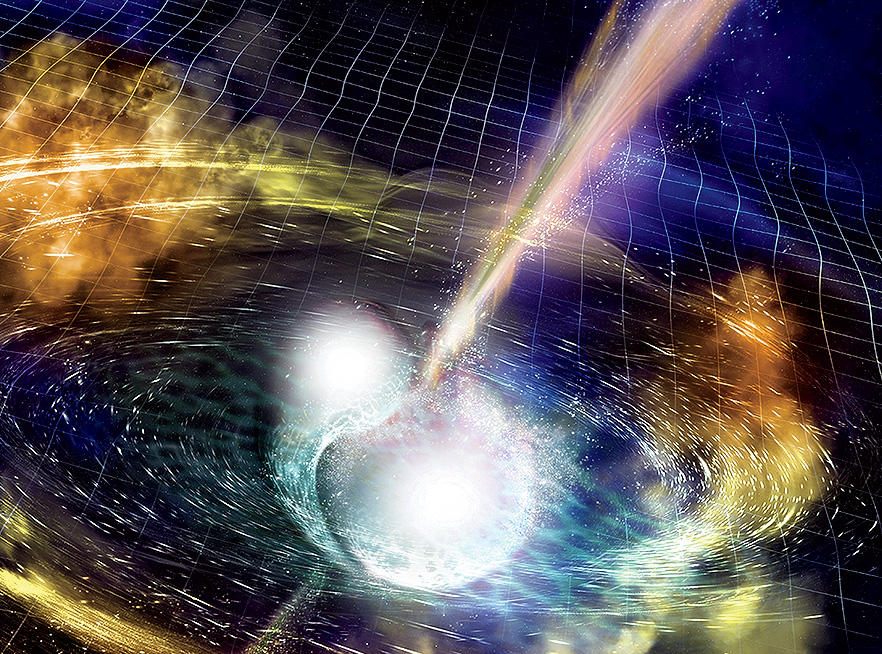A tiny bit of the gold in your wedding band, favorite necklace, or watch fell to Earth after a violent collision between two neutron stars 4.6 billion years ago, according to a new study by astrophysicists Szabolcs Márka of Columbia University and Imre Bartos ’12GSAS of the University of Florida. The paper, which appears in the journal Nature, is among the first to pinpoint the cosmic birthplace of rare elements. It suggests that an epic stellar explosion that occurred around the same time that our solar system was forming spewed out approximately 0.3 percent of all the gold, platinum, uranium, and iodine found on Earth.
Since the explosion distributed these elements evenly throughout our solar system, every human may have an eyelash’s worth in them, mostly in the form of iodine, according to the scientists. A wedding band would contain about ten milligrams of its gold and a nuclear reactor two hundred kilograms of its uranium.
Márka and Bartos made the discovery by analyzing meteorites that date from our solar system’s formation and then using computer models to determine what kind of cosmic event likely produced their unique chemical composition.
The scientists say their findings suggest that collisions between neutron stars — the ultra-dense cores of massive stars that have collapsed in on themselves — play a more important role in the life cycles of elements, planets, and solar systems than was previously recognized.



